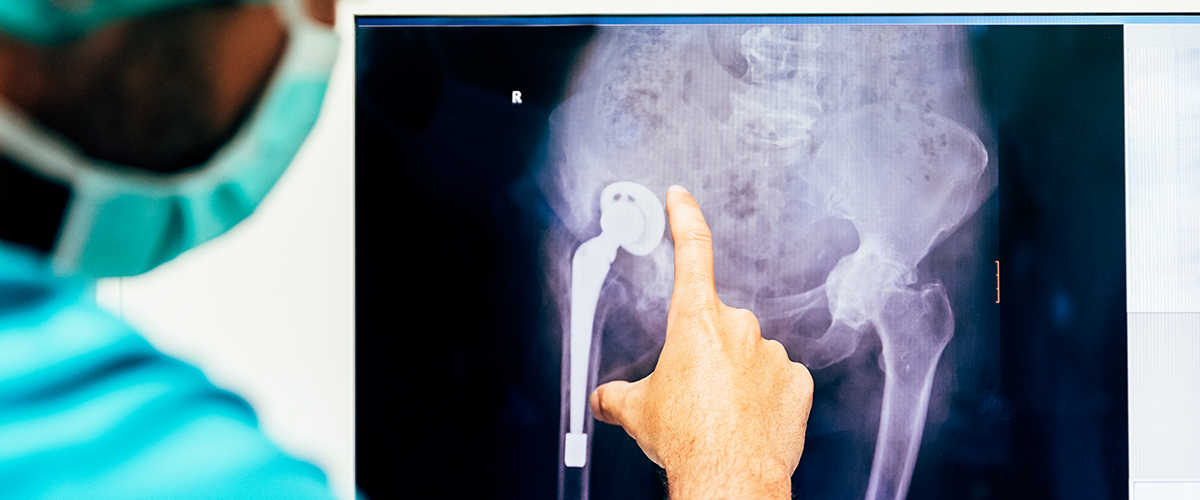
What is a biomaterial?
A biomaterial is an artificial or of natural origin material, used to restore and fix biological structures in a purpose of recovering their functionalities and improving the quality of life of a patient. Such materials must show high strength and be able to withstand the patient’s every day activities. Biomaterials serve in various organs, they can act as artificial heart valves, blood vessel stents, implants or dental prosthesis. It is estimated, that within the next 10 years, the number of hip joint replacements will increase more than 600% worldwide.
The main reasons for this growth is that the human joints suffer from diseases such as arthritis, in other words – joint inflammation; or osteoporosis, which is a progressive loss of bone mass. Additionally, world’s older population dramatically grows, inflating the demand for such procedures even more.
With the increasing number of hip replacements, there is also an increase in revision surgeries (17% of all arthroplasties) – expensive, painful and not-so-successful procedures. Usually, hip replacement is the first of an increasingly more difficult series of surgeries.
This causes a constant hunt for an ideal implant made of material that satisfies several criteria: longevity, high immunity to corrosion caused by bodily fluids, strength, wear and fatigue resistance and – key properties – the highest biocompatibility and no cytotoxicity. Ceramic biomaterials, due to their hardness and wear-and-tear immunity have found their place in dental applications. On the other hand, synthetic polymers show high plasticity and stability. Titanium, due to its great properties – both mechanical and tribological, is the leader of biomedical materials.
A little bit of history…
For the first time commercially pure titanium was used for medical applications in the 1940s (Bothe, R.T., Beaton, L.E. and Davenport, H.A. (1940) Reaction of Bone to Multiple Metallic Implants. Surgery, Gynecology and Obstetrics, 71, 598-602). That was followed by a number of researches related with cytotoxicity of titanium (or rather the lack of it) in the environment of a human body, as well as its osseointegration. To avoid potential fractures of the implant, in mid 1960s the alloy Ti-6Al-4V, commonly used in the aviation industry, was introduced. However, it turned out that vanadium (V) may have a negative impact on biological tissue, hence in the 1980s vanadium was replaced by physiologically inert and hypoallergenic niobium (Nb) to make Ti-6Al-7Nb. Since the beginning of XXI century, one can observe a new wave of titanium and titanium alloys applications in prosthetics.
What makes titanium biocompatibility?
Biocompatibility could be describes as the “ability of a material to perform with an appropriate host response in a specific application” (The Williams dictionary of Biomaterials, D.F. Williams, 1999, ISBN 0-85323-921-5). Titanium goes way beyond this definition, as it also shows osseointegration, which is the ability to structural bonding between the surface of the implant and a living tissue. Thank to this, there is no scar tissue or cartilage formation, assuring excellent hard-tissue compatibility.
An important aspect of osseointegration is the adsorption of proteins and cell adhesion on the implant. Since proteins are charged objects, adsorption influences the conformation of proteins, which then promotes adhesion of other cells, particles or bacteria, which may cause inflammations; and in a long run – implant rejection and failures. The electrostatic forces between the protein particle and a metal surface are governed by the relative permittivity – the larger permittivity, the smaller the force. Titanium oxide (TiO2) shows a much higher relative permittivity than other metals oxides, is similar to that of water and therefore it does not change protein conformation.
Conclusions
Titanium is the most biocompatible material among metals, making it the most promising material for implants. Thank to a specific combination of mechanical and chemical properties such as strength-to-weight ratio, corrosion resistance or tribological properties, titanium stands on the podium as an ideal material for medical applications.
WOLFTEN offers certified products, made according to medical standards and norms.
Other articles
Norms and standards of non-ferrous metal products
All non-ferrous metal products offered by WOLFTEN are manufactured according to specific standards. Clearly defined technical standards guarantee the homogeneity of the materials used, which directly affects the specific characteristics of each structure and their safety.
Sustainable environmental technologies and metallurgy
Can metallurgy be considered a sustainable environmental technology? This is the question that bothers not only environmental activists, but anybody concerned with the mining industry having a considerable impact on the natural environment.
Neural networks in metallurgy
Ability to develop, create and apply a specific material marks the border between business success or failure. Forecasting mechanical properties of a new alloy is an important aspect for both scientists and engineers as it allows saving time and money.



